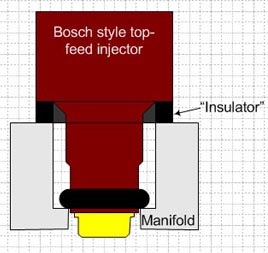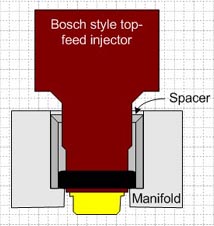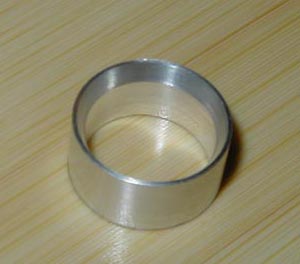Injector Bushings
3rd Gen RX-7 Top-feed Secondary Injector Mounting Solution.

I chose to use 160lb (1680cc) injectors in the secondary position on the fuel system for my '93 RX-7. Stock secondary injectors are side-feed style, so in addition to making a fuel rail I also had to figure out how to seal the injector to the lower intake manifold (LIM) satisfactorily. The stock setup worked by totally sealing the fuel side of the injector within the fuel rail "shell" and then bolting it to the LIM. Inside the LIM was a diffuser used to further atomize the spray. Manifold pressure doesn't leak by virtue of the fact that the fuel rail is bolted over the injector bore.

When upgrading to top-feed Bosch style injectors most people remove the diffusers to fit their injectors into the bore. The resulting fitment doesn’t lend itself to proper sealing and so the recommended solution has been to cut a piece of 5/8” ID hose and place this around the injector. This helps to stabilize the injector and also seal it. It has been referred to as an “Insulator” although it’s really a make shift injector seal.

When upgrading to top-feed Bosch style injectors most people remove the diffusers to fit their injectors into the bore. The resulting fitment doesn’t lend itself to proper sealing and so the recommended solution has been to cut a piece of 5/8” ID hose and place this around the injector. This helps to stabilize the injector and also seal it. It has been referred to as an “Insulator” although it’s really a make shift injector seal.

Here's an image of the finished product. It doesn't look like much but the devil is in the details.
I make these upon request now and can usually find the time to make a few sets.
|
|
If you'd like to turn your own, here are the dimensions that I used.
|


